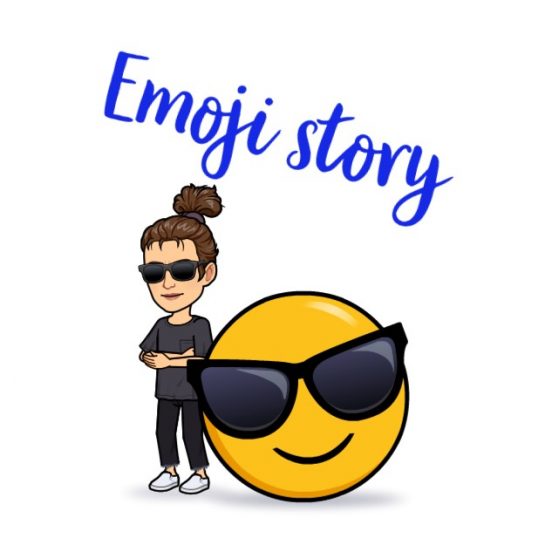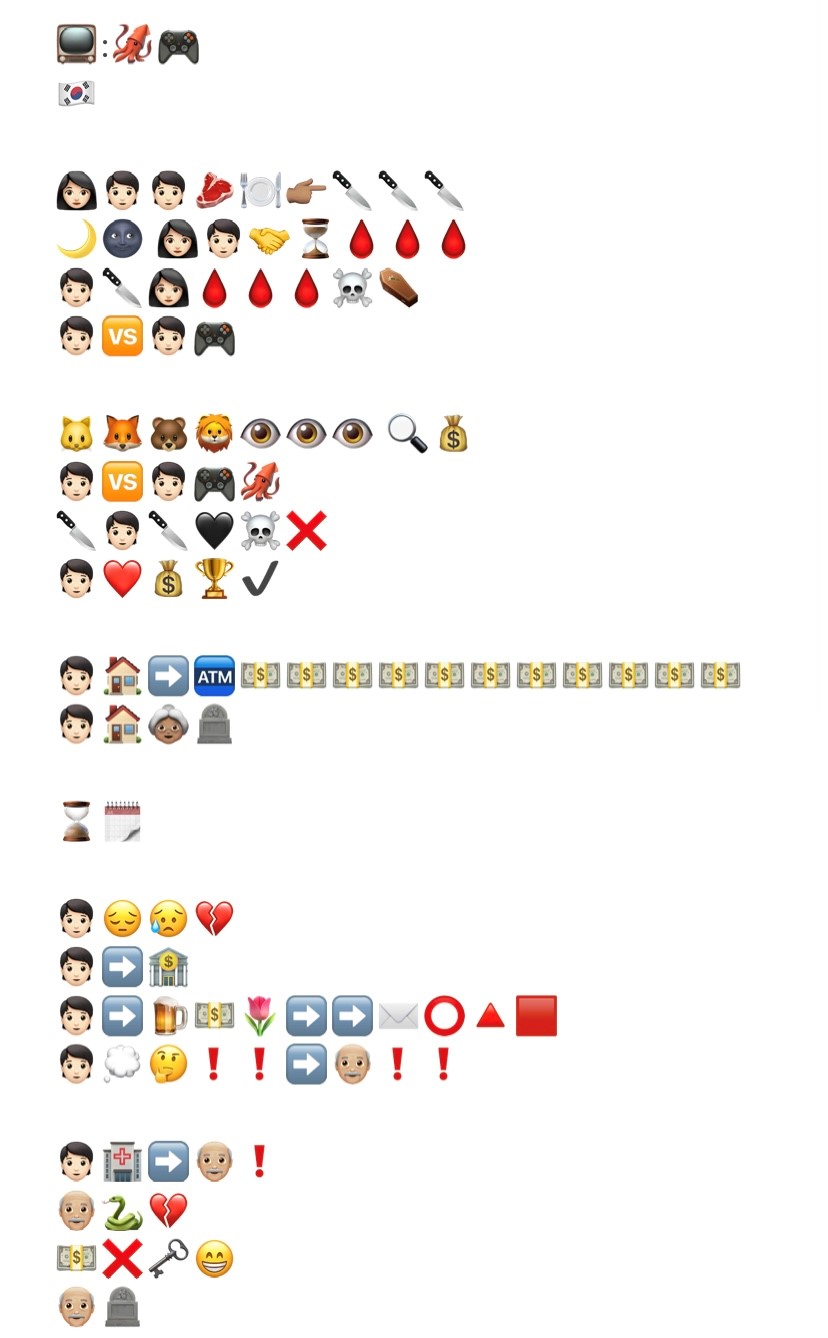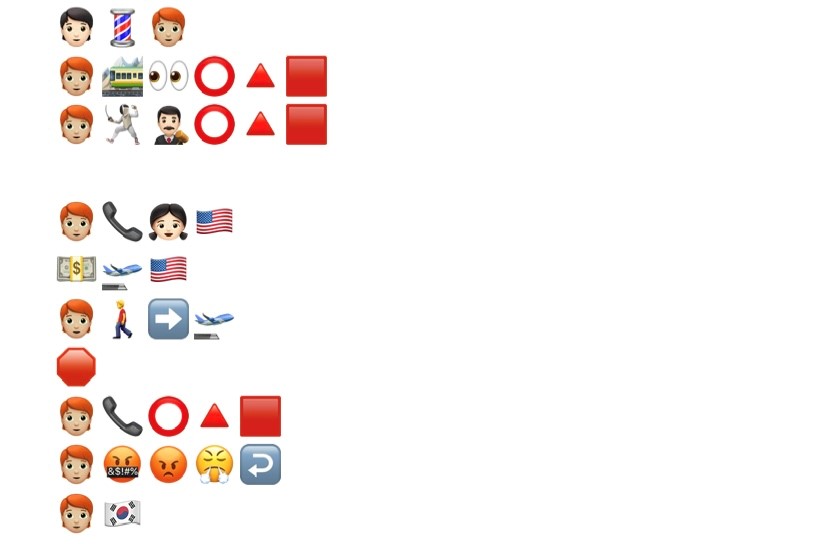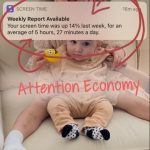Emoji Story
This was not as easy as I initially thought it was going to be. Even though I use emojis/Bitmoji constantly, it was difficult the be limited to ONE medium to tell the story. Also, I want to add *spoiler alert* for those that are maybe watching something popular right now…
Technique
I decided on using my iPhone for this task and typed out my Emoji story on  my Notes page. This felt the most”natural’ – using my phone is usually how I would use my emoticons. All was fine until I attempted to copy and paste the story into an email- I did this to send it to myself to then post it from my laptop to the blog. Long story short, the emoticons did not transfer identically. Note the picture. They looked pixelated and images that should have been a flag came out as ‘KR”.
my Notes page. This felt the most”natural’ – using my phone is usually how I would use my emoticons. All was fine until I attempted to copy and paste the story into an email- I did this to send it to myself to then post it from my laptop to the blog. Long story short, the emoticons did not transfer identically. Note the picture. They looked pixelated and images that should have been a flag came out as ‘KR”.
So I ended up taking a screenshot of the emoji story on my Notes page and uploaded those images.
Here is the Emoji Story
Afterthoughts
As I recalled the episode, I began to look for emoticons that matched the words and then the ideas. I found myself talking out loud, trying to piece together the story. I began choosing important parts of the plot, and finding the emoticon that best fit the scene I was visualizing. I did rely on the emoticon for exclamation mark “!” because I felt like I couldn’t find any emoticons that indicated surprise. I also found it difficult to translate the ‘moral’ of the show. This is interesting since I always thought I chose emoticons in place of my feelings when I text. However, I quickly learned that the more ‘complicated’ the emotions, the more written text was needed.
I did start with the title. I even began by using a flag emoticon indicating where the series is filmed. I also used, what Kress (2004) discusses when he mentions the layout of websites, a way to kind of create a “discernible path” (p.9). I used spaces to indicate breaks in the scene, almost to allow whoever is reading this a way to know there is a scene break. This layout, a screen of emoticons, is SO different to how I translate any message. Funny enough, the last show I watched was very visual which I thought would really help. What I mean is, it was very graphic. What I found out is these more graphic moments were not easily translated though the emoticons.
AH- Moment
SO the problem was accepting that what “the visitors come to find is not knowledge but information”(p.9-10). Kress is bang on here. I really needed to let go of the POWER here.
I was presenting images that I did not create to tell a story that was not mine. I had to let go and understand that the viewer was going to make their own assumptions, and that is totally ok. In fact, this made me connect to my own pedagogy. I need to remind myself that I am NOT giving students knowledge, but information. And it is this information: facts, tables, etc., that they are meant to make their own understanding.
This also made think of how our students communicate in a multimodal way. I now wonder if written text feels somehow limited when they are communicating ideas? Like Kress comments, “new media make is possible to use the mode that seems most apt for the purpose of representation and communication” (p.19).
I’m trying to connect these tasks to my practice and I would love to use this technique, limiting a story to just images, to have students communicate a day in their life. I think this would be an excellent classroom activity at the start of the year, and a great way to discuss concepts such as visual literacy and storytelling.
In fact, Indigenous knowledge keepers and Elders often use objects when they are telling stories, which in many ways seems as a multimodal way of communicating. In fact, Alo White (CBC, 2002) commented in the CBC audio clip below that having video of Indigenous elders on his website captures tradition for a lifetime of generations. Upon visiting the site, you can see Elders using objects to illustrate points. I feel like storytelling, Indigenous or non, is the true multimodal way of communication.
References
CBC News. (2021, April 20). Traditional Anishinaabe songs & stories just a click away thanks to new website. https://www.cbc.ca/news/canada/thunder-bay/first-nations-elders-website-1.5993540
Kress, G. (2005). Gains and losses: New forms of texts, knowledge, and learning. Computers and Composition, Vol. 2(1), 5-22.






chowey
October 16, 2021 — 6:13 pm
Hi Mandy,
Having just finished viewing the series in your post it was very easy to identify your chosen text. I found it really interesting that you focussed on one episode rather than the series as a whole. What struck me about this is how much detail can be expressed by emojis within only one episode. It made me think about how much detail is enough to effectively communicate our ideas. I like how you talk through your process of speaking out loud and identifying the important plot details. This experience was different from mine. At one point you say that you learned it becomes more difficult when an emoji is complicated, which is an interesting observation, but I’m wondering what do you mean by complicated?
Also, given the available icons, it was rather easy to express the title as there was clearly an icon for the squid and a game. I’m curious how you would represent the squid if a squid icon didn’t exist?
Thank you,
Chris
Megan Ravenhill
October 17, 2021 — 8:11 pm
Hello! Fantastic job representing the TV Series: “Squid Game”. At first, I thought it was the entire series, however, when I saw the steak emoji, I quickly realized that you were representing the final episode. From your emoji’s, you have displayed that the characters are at their final dinner before the last game. However, the female is killed and is down to two last characters. There is a final battle and one character becomes victorious. The character is given money but realizes that his life is no better, it is more depressing as his mother has died and those who he loved are now gone. He meets an old lady who offers him a flower and realizes the old man from the games was behind it all. He passes away in the end. Let me know if I got this right!